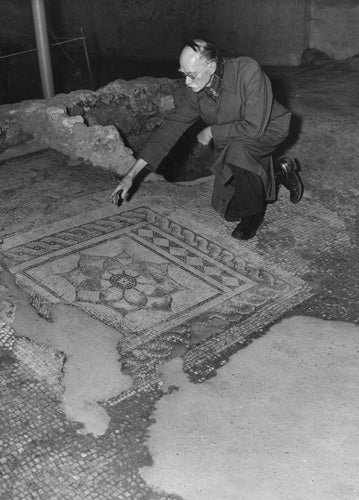Canterbury's Roman Museum could fall victim to the credit crunch

Canterbury City Council is the latest local authority set to close museums as part of cost-cutting measures. It is wielding the budget axe and has decided that saving the city’s Christmas lights is more important than keeping the Roman Museum open to the public.
Under the budget proposals, the Roman Museum and the nearby the Westgate Towers Museum would close, while Herne Bay Museum would remain open only for ‘educational’ groups but not for the general public.
Canterbury is not alone in sacrificing museums – often seen as soft targets – as part of cost-cutting drives. Leicester, Worthing and Kingston are three others to have looked to cut museum opening hours in an effort to save money. In the case of Kingston and Worthing, residents have resisted the changes.
A National Cost-Cutting Trend
In Kingston, the council reversed plans to slash the museum’s opening hours after a public outcry. In Worthing, plans to cut the Museum and Art Gallery’s opening hours are up in the air after more than half of those responding to a public consultation said they would accept a 14.9% rise in council tax if it meant the preservation of cultural and education programmes, which include the museum.
Canterbury’s budget plans fly in the face its own consultation, which saw more than 44% of respondents describe the museum changes as “most unacceptable”. With the Tory-led council seemingly determined to go ahead, public opposition to the plans is mounting. An online petition has been accumulating signatures from the general public, as well as from academics and teachers, while a Facebook group carrying news and updates on the campaign now has more than 1,000 members. Information on who to write to at council is provided on the Save Canterbury’s Museums website.
'Canterbury Should be Exploiting Its Heritage, Not Shutting It'
Dr Paul Bennet of the Canterbury Archaeological Trust is among those fighting the closures. “We should be exploiting Canterbury’s heritage assets more fully at this difficult [economic] time, not considering closure of the best of them for potential re-use as a retail outlet,” he says. “Canterbury is not just a provincial town – its name is known all over the world for its heritage and it is therefore irrational, even in difficult times, to chip away at what is the main basis upon which visitors come to the city in the numbers they do."
Canterbury is a UNESCO-listed World Heritage Site, and the Roman Museum and Westgate Towers both sit within the popular tourist precinct that includes the world-famous Cathedral, St Martin’s Church and St Augustine’s Abbey. Bennet argues that cultural and historical sites that could further exploit Canterbury's tourist potential should be encouraged, not shut down altogether. “It is the very combination of museums in different locations that with greater engagement ought to provide added value to the Canterbury experience,” he says.
The Roman Museum – underground at the level of the old Roman town – offers a fascinating window on life in a Roman town house, complete with an in situ Roman mosaic that was discovered following wartime bombing. The interactive nature of the museum means visitors can see reconstructions that illustrate what the house was like in Roman times, and there are also touch screen computer games and a ‘touch the past’ area where visitors can handle real Roman artefacts.
A final decision will be made at a full meeting of council on February 18.
Two major publishers go bust as recession bites into historical book world
Local Info: Tips For Taking Part in Illuminating Hadrian's Wall
Join our commenting forum
Join thought-provoking conversations, follow other Independent readers and see their replies
0Comments